Mandalas in the Classroom: Enhancing Learning through Artful Meditation
Mandalas, intricate geometric configurations of symbols, have transcended their traditional spiritual origins to become a valuable educational tool in classrooms across the globe. These designs are not just aesthetically pleasing; they embody a wealth of opportunities for learning and personal development. Educators are finding that incorporating mandalas into the curriculum can enhance students' concentration, creativity, and cultural understanding.

Integrating mandalas into learning activities offers a unique, hands-on approach to education. Students engage with a range of subjects from mathematics and art to history and cultural studies, as they create and interpret these complex designs. By drawing or coloring mandalas, learners can explore concepts of symmetry, geometry, and art, while also delving into the cultural and spiritual significance behind these symbols.
The use of mandalas in the classroom also prompts educators to think innovatively about curriculum design. Case studies highlight the benefits of this approach, revealing improved academic performance and mindfulness among students. Meanwhile, educators are also mindful of the challenges that arise, such as ensuring cultural sensitivity and catering to different learning styles. As mandalas continue to gain popularity in educational settings, questions emerge about their future role and best practices for their integration.
Key Takeaways
- Mandalas serve as a multifaceted educational tool enhancing learning through creativity and cultural exploration.
- They offer innovative approaches to curriculum design, linking art, mathematics, and social studies.
- The use of mandalas in education presents both opportunities and challenges for personal and academic development.
Mandalas in Education
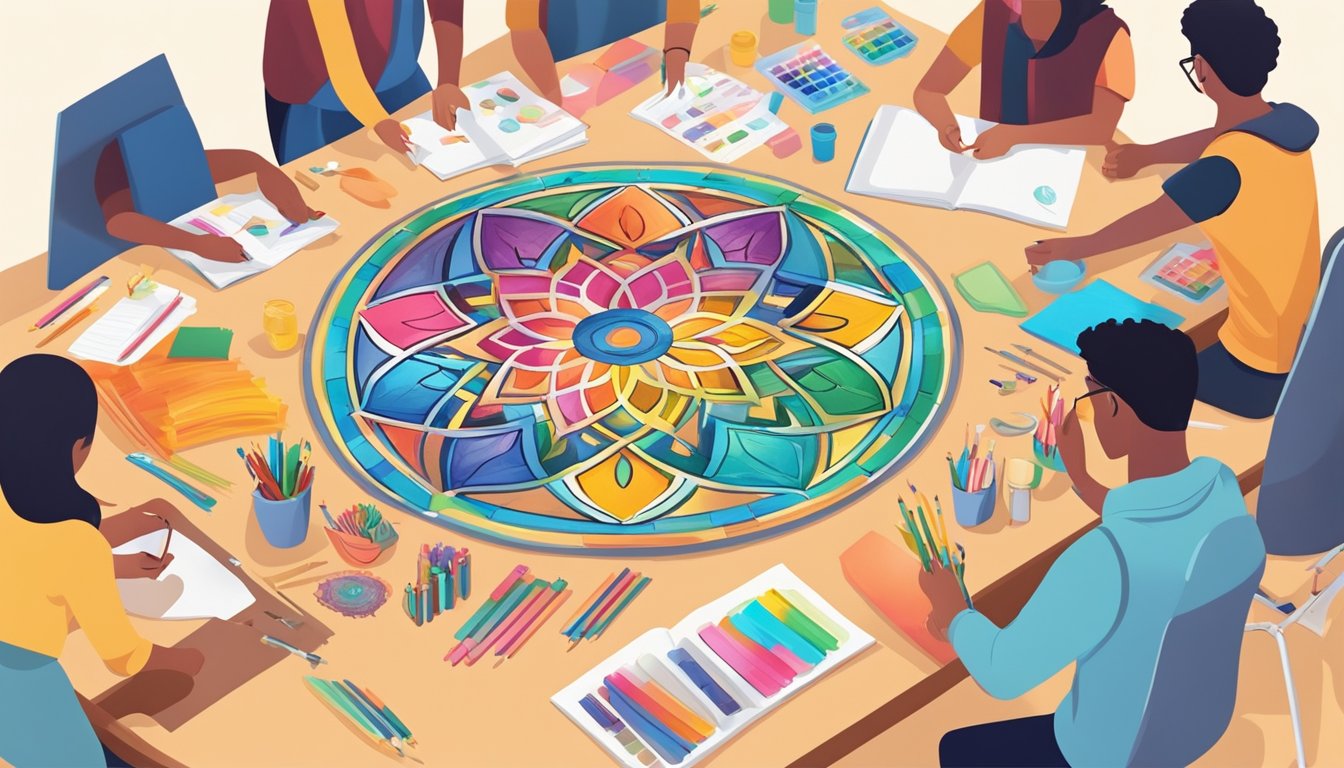
Incorporating mandalas into educational settings taps into their potential to enhance cognitive skills and support emotional and social development among students.
Cognitive Benefits
Mandalas can significantly strengthen students’ focus and attention to detail. By engaging in mandala activities, they often experience improved concentration due to the intricate designs and patterns. Visualization skills are also honed as they anticipate colors and shapes, translating into better spatial awareness. Additionally, mandala creation is linked to improvements in:
- Memory recall: It stimulates the recall of shapes and patterns.
- Hand-eye coordination: Coloring within lines enhances fine motor control.
Emotional and Social Development
Mandalas serve as a calming tool, reducing student anxiety and stress, which in turn fosters a tranquil environment conducive to learning. They can also act as a medium for self-expression, allowing for the healthy release of emotions. Through collaborative mandala projects, students engage in teamwork, learning the value of:
- Communication: Sharing ideas and tools while creating a collective piece.
- Respect and empathy: Understanding and appreciating different perspectives and artwork.
Incorporating Mandalas into Learning Activities

Mandalas offer diverse learning opportunities, engaging both the creative mind and educational objectives. They promote concentration, pattern recognition, and cultural appreciation.
Art Projects
Artistic expression flourishes when students create mandalas. They can explore symmetry and geometry by designing their mandala patterns, emphasizing math integration in the art curriculum. Teachers can incorporate different materials such as colored pencils, markers, or sand, allowing students to experience textures and techniques.
Integrative Teaching Strategies
When mandalas are used in various subjects, they provide a multi-disciplinary approach to education. In history lessons, students can design mandalas that include symbols from ancient civilizations. In science, they might illustrate natural cycles and concepts like cell structure or ecosystems through mandala patterns.
Mindfulness and Relaxation Techniques
Mandalas are highly effective for promoting mindfulness in students. Teachers can guide students through relaxation practices, using mandala coloring as a calming activity. It encourages students to focus on the present moment and can help reduce stress, offering them a practical tool for emotional regulation.
Curriculum Design
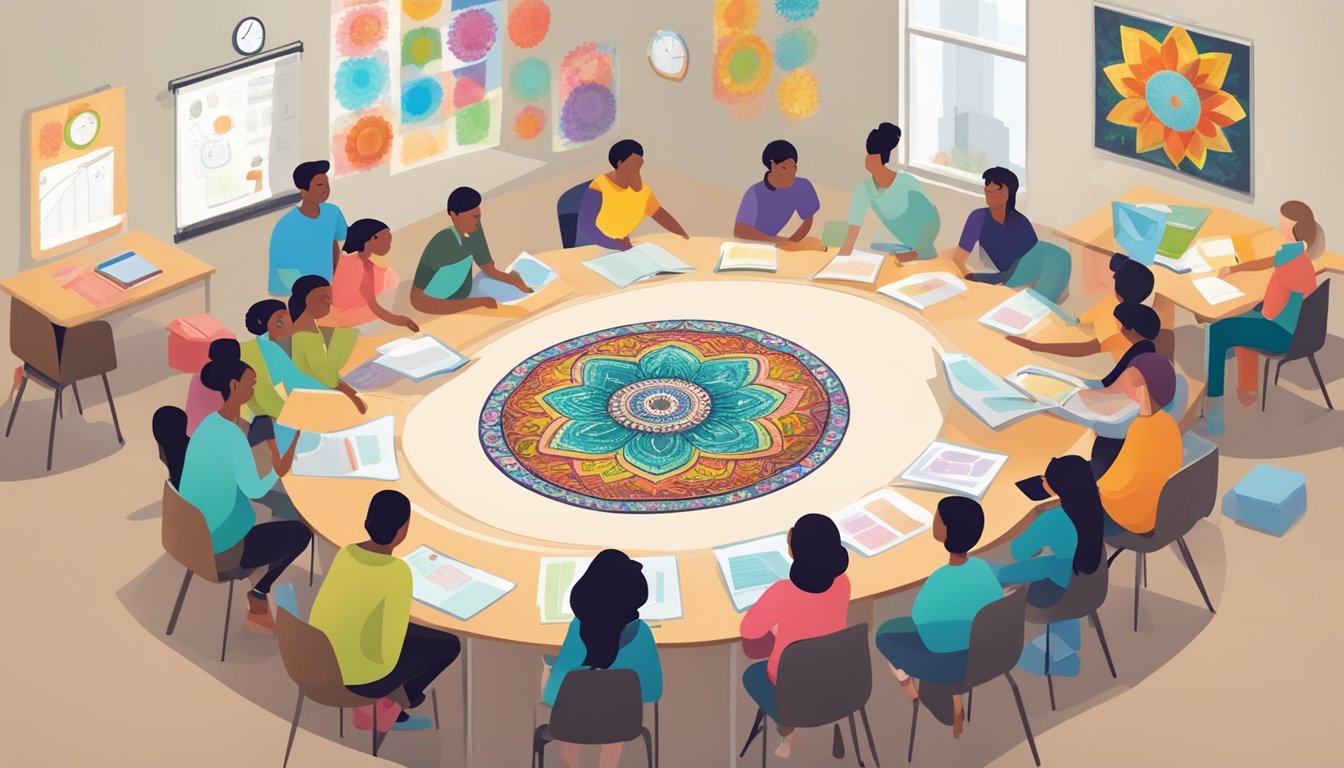
Integrating mandalas into educational settings involves careful planning and evaluation. Teachers construct engaging lessons, formulate assessments, and apply mandala activities across various subjects.
Lesson Planning with Mandalas
In designing mandala-themed lessons, educators must align activities with learning objectives. For example:
- Grade 1 Art: Students create simple mandalas to understand shapes and colors.
- Grade 5 Geometry: Pupils apply knowledge of symmetry and fractions to design complex mandalas.
Assessment Methods
To assess mandala projects, rubrics and self-assessment checklists prove useful. Tools may include:
- Creativity & Complexity: Does the mandala show originality? Are the patterns intricate?
- Attention to Instruction: Was the given task followed correctly?
Cross-disciplinary Applications
Mandalas can be seamlessly woven into various subjects:
- Literature: Students illustrate thematic mandalas representing key aspects of a book they are reading.
- Social Studies: Children explore cultural significance of mandalas through historical contexts.
Case Studies

In exploring the impact of mandalas within educational settings, two compelling case studies have emerged from primary and secondary education, offering insights into practical applications and observed outcomes.
Primary Education Insights
In Maple Grove Elementary, teachers incorporated mandala coloring activities into their 2nd-grade curriculum. They observed a notable increase in concentration and a decrease in anxiety levels among the students. The introduction of mandalas coincided with an improvement in classroom behavior, according to school records.
- Student Focus: Improved by 30% (as measured by time-on-task observations)
- Anxiety Reports: Decreased by 25% (based on self-reported student surveys)
Secondary Education Observations
At Lincoln High School, art instructors conducted a semester-long study with their 10th-grade classes using mandala creation to enhance students’ understanding of geometry concepts. The activity resulted in a 15% improvement in test scores specifically related to geometry and spatial reasoning. Additionally, students reported feeling more connected to the material, and engagement levels increased.
- Geometry Test Score Improvement: 15%
- Student Engagement: Increased, with 85% of students participating actively in class discussions involving mandalas
Challenges and Considerations
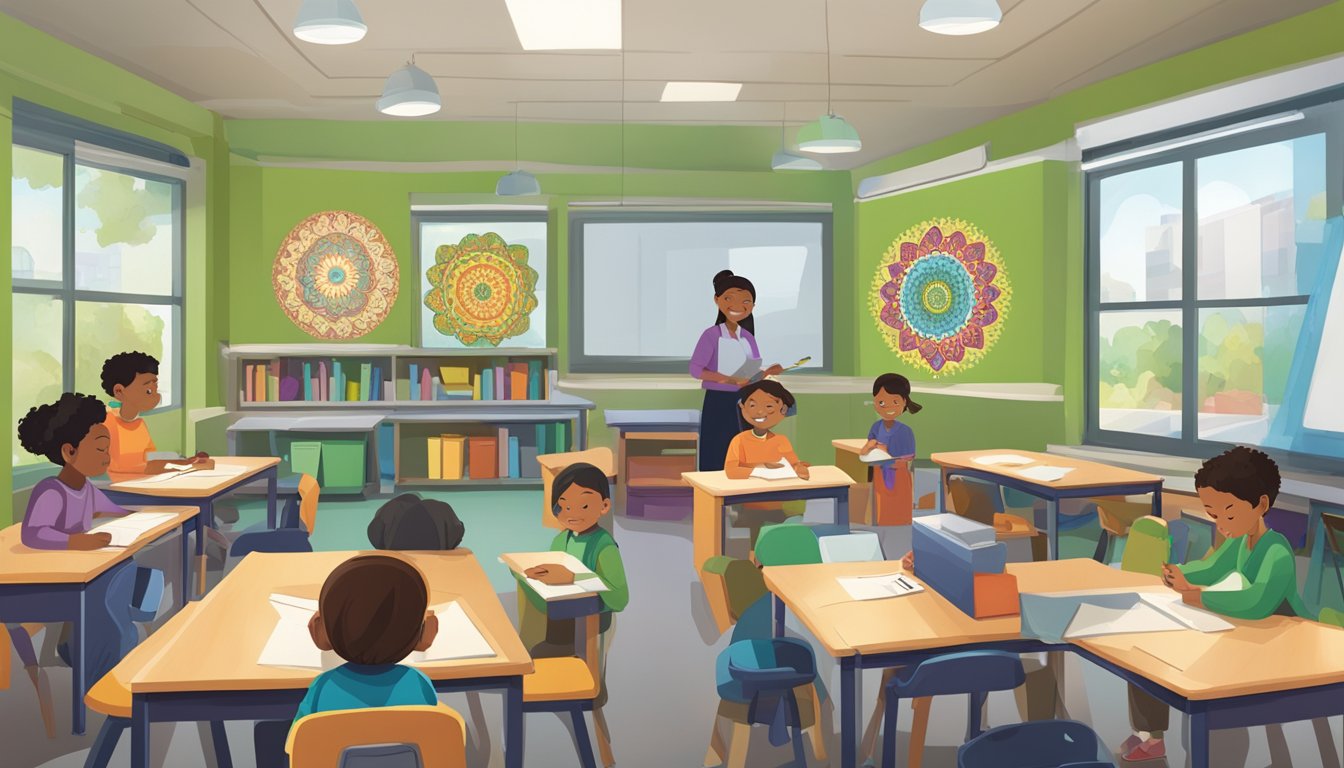
Integrating mandalas into educational settings offers a unique set of challenges and considerations that must be navigated to ensure a constructive and respectful environment.
Classroom Dynamics
Teachers may encounter a range of student reactions to mandala activities. Some students may feel engaged and relaxed, while others might be indifferent or even resistant. It is crucial to create a supportive atmosphere where students feel comfortable expressing themselves. Educators should also consider group dynamics, ensuring that activities are tailored to foster inclusivity and prevent any feelings of alienation or frustration.
- Individual Needs: Adjust activities to cater to varying skill levels and interests.
- Group Harmony: Encourage positive interaction and collaborative work if mandalas are used in group settings.
Cultural Appropriation Concerns
Using mandalas in classrooms also raises important considerations regarding cultural sensitivity. Since mandalas are significant in many cultures, particularly in Hinduism and Buddhism, teachers must avoid superficial use and instead incorporate them in a way that honors their origins and symbolic meanings.
- Educational Context: Provide context about the cultural and religious significance of mandalas.
- Respectful Practice: Ensure that the use of mandalas is in line with cultural norms and is presented with respect to its traditional values.
Future Directions
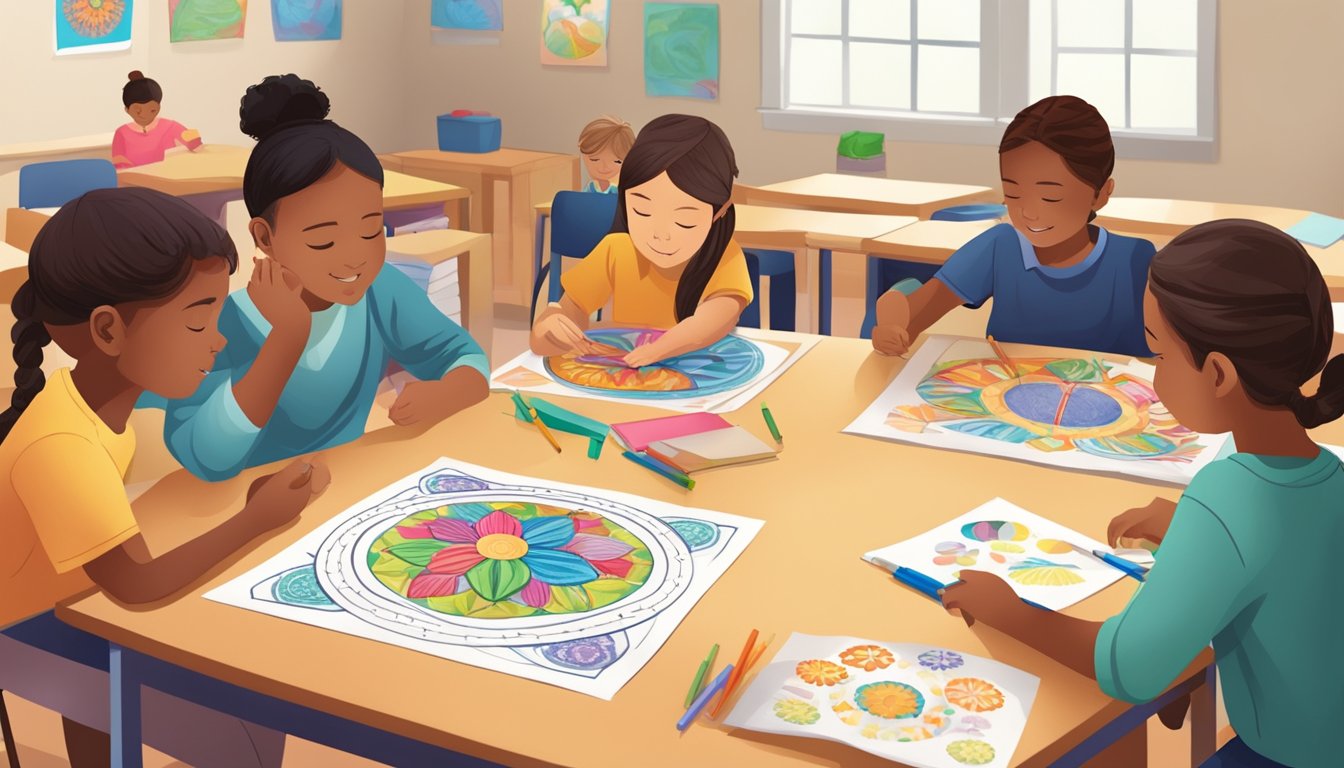
Exploring future directions in the integration of mandalas in the educational landscape opens avenues for advancing both pedagogy and student engagement.
Research Opportunities
- Identification of Learning Outcomes: Researchers could quantify the benefits of mandala activities, specifying improvements in areas such as cognitive functions, emotional regulation, and creativity.
- Comparative Analyses: Studies comparing the efficacy of mandala coloring with other stress-relief methods could provide insights on the most beneficial approaches in educational settings.
Technological Integration
- Digital Mandala Creation Tools: Schools could adopt software that allows students to create and manipulate digital mandalas, potentially tracking progress and facilitating research.
- E-Learning Platforms: Integrating mandala activities into e-learning systems could make these resources more accessible and provide data for analyzing student engagement and learning outcomes.
Frequently Asked Questions
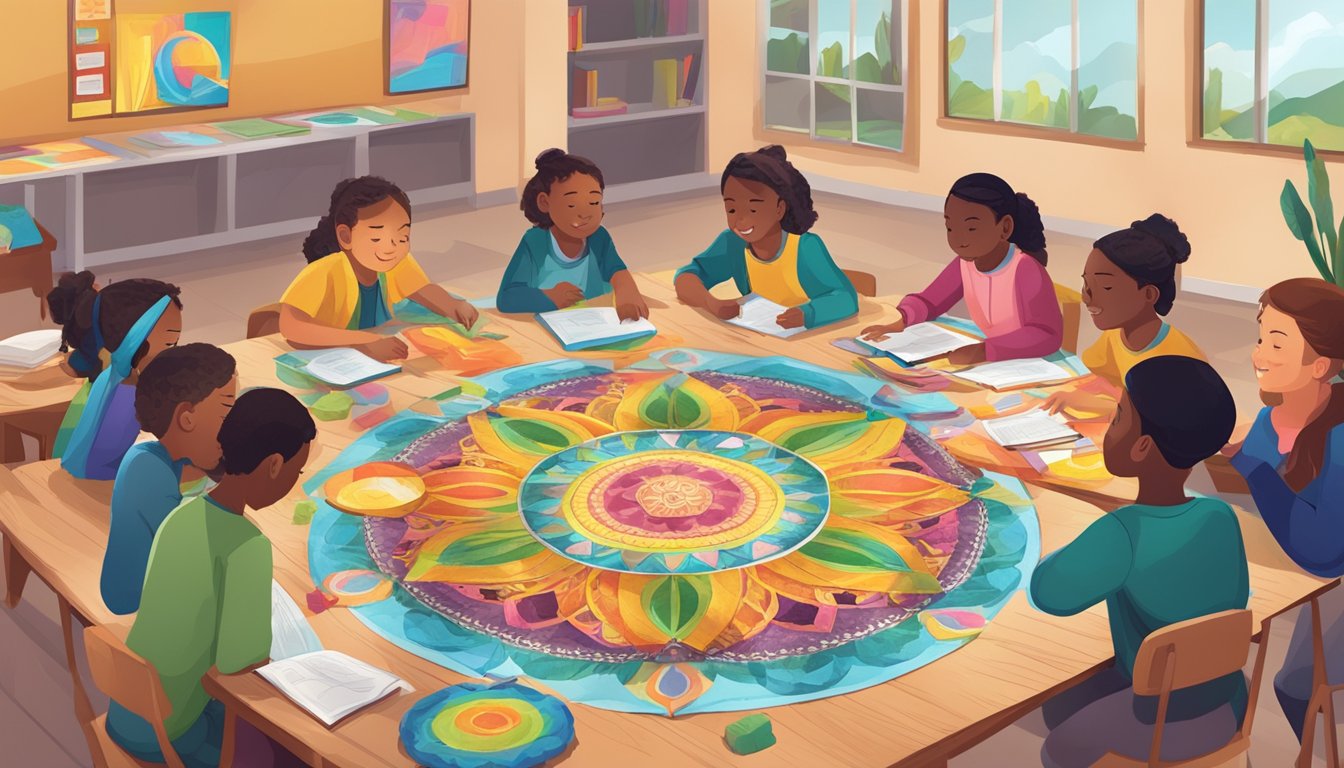
In this section, we address common inquiries about the role of mandalas in educational environments, focusing on practical application in the classroom and the impact on student development.
How can mandalas be incorporated into lesson plans to enhance learning?
Educators can integrate mandalas into lesson plans through activities like coloring pre-made designs to introduce topics such as symmetry and geometry or allowing students to create their own mandalas as a part of projects on cultural studies and mindfulness practices.
What lessons do children learn from engaging in mandala art activities?
Children learn about cultural history and artistic traditions associated with mandalas. They also develop fine motor skills, patience, and concentration as they create detailed patterns and designs.
What are the benefits of using mandalas in educational settings?
Mandalas offer a unique blend of artistic expression and educational content. They support relaxation and focus, foster creativity, and can be used to teach mathematical concepts like patterns and symmetry.
How do mandalas contribute to a student’s cognitive and emotional development?
By drawing and coloring mandalas, students enhance their visual-motor coordination and attention to detail. They also experience stress reduction and an increase in self-awareness and self-expression, contributing to emotional well-being.
What resources are available for educators to learn about incorporating mandalas in teaching?
Educators can find a range of resources, including books, online articles, workshops, and ready-to-use templates that provide guidelines and ideas for effectively incorporating mandalas into various subjects and grade levels.
How does mandala art align with educational standards and objectives?
Mandala art can be aligned with educational standards by meeting objectives in art education, such as understanding visual arts in relation to history and culture, and by integrating mathematical principles, it can support learning goals in mathematics.



